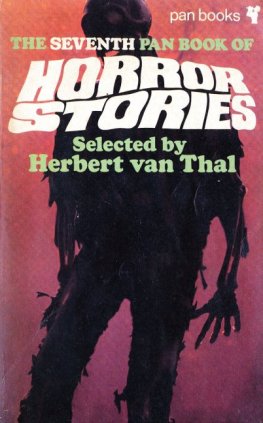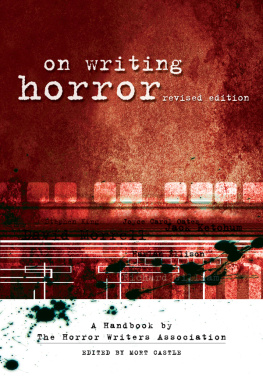Lee Mellor - Behind the Horror: True Stories that Inspired Horror Movies
Here you can read online Lee Mellor - Behind the Horror: True Stories that Inspired Horror Movies full text of the book (entire story) in english for free. Download pdf and epub, get meaning, cover and reviews about this ebook. year: 2020, publisher: DK Publishing, genre: Detective and thriller. Description of the work, (preface) as well as reviews are available. Best literature library LitArk.com created for fans of good reading and offers a wide selection of genres:
Romance novel
Science fiction
Adventure
Detective
Science
History
Home and family
Prose
Art
Politics
Computer
Non-fiction
Religion
Business
Children
Humor
Choose a favorite category and find really read worthwhile books. Enjoy immersion in the world of imagination, feel the emotions of the characters or learn something new for yourself, make an fascinating discovery.
- Book:Behind the Horror: True Stories that Inspired Horror Movies
- Author:
- Publisher:DK Publishing
- Genre:
- Year:2020
- Rating:3 / 5
- Favourites:Add to favourites
- Your mark:
- 60
- 1
- 2
- 3
- 4
- 5
Behind the Horror: True Stories that Inspired Horror Movies: summary, description and annotation
We offer to read an annotation, description, summary or preface (depends on what the author of the book "Behind the Horror: True Stories that Inspired Horror Movies" wrote himself). If you haven't found the necessary information about the book — write in the comments, we will try to find it.
Behind the Horror: True Stories that Inspired Horror Movies — read online for free the complete book (whole text) full work
Below is the text of the book, divided by pages. System saving the place of the last page read, allows you to conveniently read the book "Behind the Horror: True Stories that Inspired Horror Movies" online for free, without having to search again every time where you left off. Put a bookmark, and you can go to the page where you finished reading at any time.
Font size:
Interval:
Bookmark:

THE HORROR
HORROR MOVIES
Written by
Dr. Lee Mellor


Senior Editor David Fentiman
Designer David McDonald
Jacket Design Lisa Lanzarini
Picture Research Sumedha Chopra
Senior Production Controller Louise Daly
Senior Production Editor Jennifer Murray
Managing Editor Sarah Harland
Managing Art Editor Vicky Short
Art Director Lisa Lanzarini
Publisher Julie Ferris
Publishing Director Mark Searle
Digital Production
Digital Programme Manager Miguel Cunha
Senior Manager Lakshmi Rao
Producer Suruchi Kakkar
Software Engineer Rachana Kishore
Production Manager Nain Singh Rawat
Production Coordinator Manish Bhatt
With thanks to Victoria Armstrong and Nicole Reynolds for editorial assistance; John Friend for proofreading.
First American Edition, 2020
Published in the United States by DK Publishing
1450 Broadway, Suite 801, New York, NY 10018
Copyright 2020 Dorling Kindersley Limited
DK, a Division of Penguin Random House LLC
All rights reserved.
Without limiting the rights under the copyright reserved above, no part of this publication may be reproduced, stored in a retrieval system, or transmitted, in any form, or by any means (electronic, mechanical, photocopying, recording, or otherwise), without the prior written permission of the copyright owner.
Published in Great Britain by Dorling Kindersley Limited
A catalog record for this book is available from the Library of Congress.
ISBN: 9781465492388
This digital edition is published in 2020
eISBN: 9780744030914
DK books are available at special discounts when purchased in bulk for sales promotions, premiums, fund- raising, or educational use. For details, contact: DK Publishing Special Markets, 1450 Broadway, Suite 801, New York, NY 10018 SpecialSales@dk.com
Set in 10.5/13.5pt Bembo MT Pro
Typeset by Jouve (UK), Milton Keynes
For the curious
www.dk.com
<
In 1931, the German director Fritz Lang wowed audiences around the world with M: A City Searches for a Murderer. Lang drew from the unprecedented number of serial killers who had emerged in Weimar-era Germany to formulate his sinister antagonist, Hans Beckert; those who worked tirelessly to catch them inspired Langs protagonist, Inspector Karl Lohmann.
S erial killers have walked among us since time immemorial. Still, there have been eras and locations that have spawned an overabundance. The United States saw an alarming spike in the number of serial killers between the mid-1960s and final decade of the 20th century: a period beginning with the so-called Boston Strangler and ending with Jeffrey Dahmer. Victorian Britain experienced a similar outbreak. Weimar Germany (191833)that ill-fated Republic sandwiched between the First and Second World Warswas so ridden with serial murderers that collectively they inspired the fictional child killer, Hans Beckert, in Fritz Langs timeless 1931 thriller M.
Less than a year before M was released, Berlin police inspector Ernst Gennat coined the term Serienmrder to refer to this strange new violent phenomenon. Gennat himself served as the main inspiration for M s Inspector Lohmann.
M begins with a murderer already on the prowlchildren play games about who will be next, and their anxious parents escort them home from school. A young girl is approached by a mysterious man, who offers to buy her a balloon. Shortly thereafter the girl is shown to be missing. In the wake of her disappearance, public panic is compounded when the murderer writes to the papers, promising to kill again. Led by Inspector Lohmann, the city police try to catch the killer, conducting psychiatric analysis of released prisoners, and new forensic tests, such as handwriting analysis and fingerprinting. The citys crimelords are so disrupted by the increased police pressure that they start their own manhunt for the killer, using the citys numerous beggars as lookouts. The police find the killers rooms, which contain incriminating evidence, and lie in wait for him. Meanwhile, the killer is on the hunt for more victims. A blind beggar identifies the killers distinctive whistling, and is aided by other beggars, who mark M for Mrder (murderer) in chalk on the back of his coat. Shortly thereafter, the killer is cornered and abducted by the crimelords. Put on trial in an abandoned distillery, the killer delivers an impassioned defense, claiming that he cannot help himselfthat his urge to kill is uncontrollableand questioning why other criminals feel they have a right to judge him. Before the mob can kill the defendant, the police arrive, break up the proceedings, and arrest him and the other criminals. The film ends with the killer, Hans Beckert, facing the judges at his real trial, while the mothers of his victims weep in the gallery.
Like Alfred Hitchcocks The Lodger, released four years earlier, M broke new ground by exploring the subtle psychological and social factors around sexual homicide, instead of simply portraying murderers as mindlessly evil. Peter Lorres depiction of a torn, baby-faced, seemingly non-threatening killer made him an international star and cemented M as one of the greatest films of all time.
Six Weimar-era serial killers served, to varying degrees, as inspiration for Hans Beckert: Johann Mayer, Friedrich Schumann, Carl Gromann, Fritz Haarmann, Karl Denke, and perhaps most of all, Peter Krten, the so-called Vampire of Dsseldorf.
In March 1918, while his countrymen were mired in the trenches of Belgium and northern France, Johann Mayer committed his first murder. Born in 1886 to an impoverished single mother, he had spent much of his childhood roaming western Germany begging for alms. After losing his left forearm in an accident involving explosives while working at a quarry, he was nicknamed Stump Arm, and deemed unfit for military service. Due to his disability, Mayer was unable to find steady work and ended up poaching, stealing, and sleeping in hollow tree trunks to survive.
Despite his wretched situation, Mayer was able to establish friendships and relationshipsconnections that he would abuse to repeatedly and successfully commit murder. In March 1918, he shot Maria Dahm, a 23-year-old ex-girlfriend, with his carbine rifle in the woods near Mayen in the Rhineland. Eleven months later, he fatally shot 28-year-old Maria Falk. As with many Germans at the time, Falk made her living traveling from industrial Bonn to the countryside to trade city products for natural goods. Mayer, the poacher, dealt in wild game. When Maria learned about his unsavory past, she attempted to end their relationship. Sadly, she was found with a bullet in her head, lying in a forest between Masburg and Hauroth.
Later in that spring of 1919, Mayer shot his friends Nikolaus Schller and Lorenz Reuter with a rifle in the pine forest outside Reimerath-Boos. Reportedly, Mayer decapitated both men, swapping their heads in a gruesome attempt to mislead the police. Schllers body and Reuters head were soon discovered under juniper brushes by a group of youngsters. Reuters decapitated corpse was found quite some time later, half a mile north of Franzen Mill in the Arbachtal.
Font size:
Interval:
Bookmark:
Similar books «Behind the Horror: True Stories that Inspired Horror Movies»
Look at similar books to Behind the Horror: True Stories that Inspired Horror Movies. We have selected literature similar in name and meaning in the hope of providing readers with more options to find new, interesting, not yet read works.
Discussion, reviews of the book Behind the Horror: True Stories that Inspired Horror Movies and just readers' own opinions. Leave your comments, write what you think about the work, its meaning or the main characters. Specify what exactly you liked and what you didn't like, and why you think so.













![Matt Cardin - Horror Literature Through History [2 Volumes]: An Encyclopedia of the Stories That Speak to Our Deepest Fears](/uploads/posts/book/119545/thumbs/matt-cardin-horror-literature-through-history-2.jpg)
